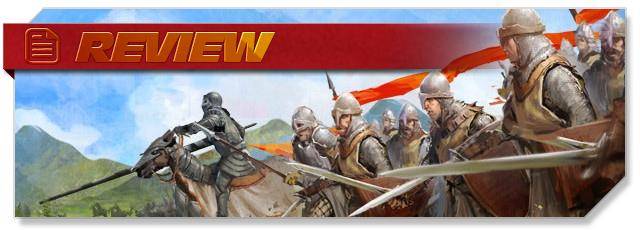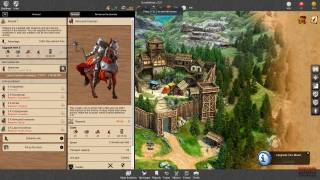Lords & Knights Review
Pros: Clean interface, cross platform compatible, requires long term planning, integrated wiki
Cons: Basic features and interface, no tooltip popups, very repetitive early game
Gameplay: 6
Graphics: 5
Performance: 9
Overall: 6.5
We checked out Lords & Knights from Xyrality, a free to play medieval strategy available on mobile and through web browser. We played the game through browser and checked it out for a few hours to see how it played. In a pretty packed genre of other similar strategy titles we were interested to see how Lords & Knights compared.
At a first glance the graphics are pretty basic; the starter settlement is far from inspiring. Little more than a static image of a wooden fort with a small handful of animations it’s a shame more time wasn’t put into it given how much you stare at it. The graphical user interface was very clean and easy to use, but a little too modern to fit the medieval theme and looked like a standard mobile app. The game does have mobile application and after the first hour of gameplay we would say it is a title that is better suited for it. One of the biggest downfalls of the UI was how littler hover over text there was on the various icons and buttons. This glaring absence made it hard to know straight away what things did, or what resources were used for, and again seems to show that the mobile element has taken priority over the browser.
The repetitive nature of gameplay, from constructing or upgrading buildings, or completing the same text based quests was a little tedious. Every task in the game, whether training units, constructing buildings, or making attacks, took quite a while. On top of this we were limited with the number of actions we could do, such as only constructing/upgrading two buildings at a time. Such limitations could be bypassed by spending Gold premium currency, but if spent like this we would run out in no time. With task times and rote gameplay, this is why the game makes a better app that you keep an eye occasionally instead of sitting and playing at your PC.
When it comes to features and content, at least in the early portions of the game, it is very limited. Menu after menu the tasks are very similar and the actions required to perform them are pretty much the same. From typical free-form gameplay and choosing what you want to do, or guided by the “Events” (quests), this repetition is reinforced over and over. Upon completing an event to “upgrade a building to level 3”, the tasks gave us our reward and then instantly reset to simply “upgrade a build to level 5”. This method of questing lacks in any effort or user engagement and is a big disappointment.
Strategically it’s hard to make a call on. As with most strategies of this type the appeal of the game grows the longer players stick with it and become invested. Being able to take over and control multiple locations opens up the ability to also lose control of castles. This alone means playing the game is at least somewhat meaningful.
The premium content element focuses on allowing players to spend cash to purchase a versatile Gold currency. Gold is spent on replenishing resources, rushing building/training, speeding up troop movement, expanding construct/training queues, and more. It provides advantages in every way possible and at least hovers on the border of pay to win. That said, it would cost a lot to consistently use Gold, but once players have a good grasp of the game there doesn’t appear to be enough strategy to allow skill to become dominant. With skill and knowledge equal, the Gold spenders will gain the advantage if they need it.
The game isn’t without its interesting features that do provide some additional tactics to gameplay. Using copper to place Spies (needing to spend more copper than is held within the Castle you’re spying on), or attacking during the day or night both having different effects. Merging Castles into Fortresses and Fortresses into Cities give players a concrete goal. Furthermore, it means players must consciously decide who makes the best target for an attack based on their future territory advancement.
For a mobile game Lords and Knights is casual enough to let players enjoy it and simple enough to pick up the controls quickly. For more competitive players there are enough nuances to be learned to give an advantage, and active play will yield results. As players advance and become more competitive then the game can become demanding with how often players need to respond to enemy actions. The game isn’t going to be for everyone, the basic graphics, minimalist style and features, the lack of fluff and snazzy graphics are going to be a turn off for some. However, at its core, there’s a solid game that has enough originality that it’s worth giving a go.







Deja tu comentario
You must be logged in to post a comment.